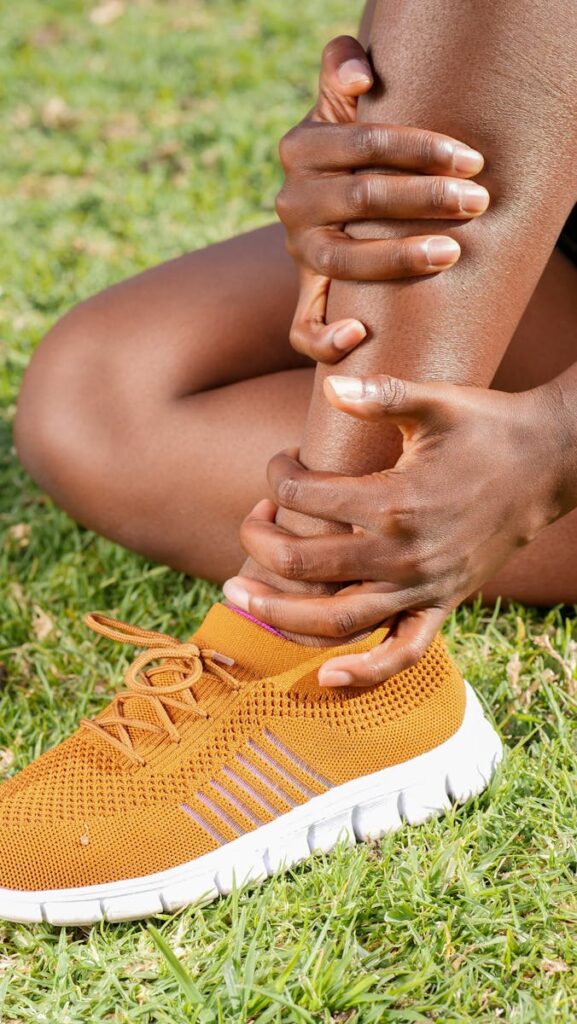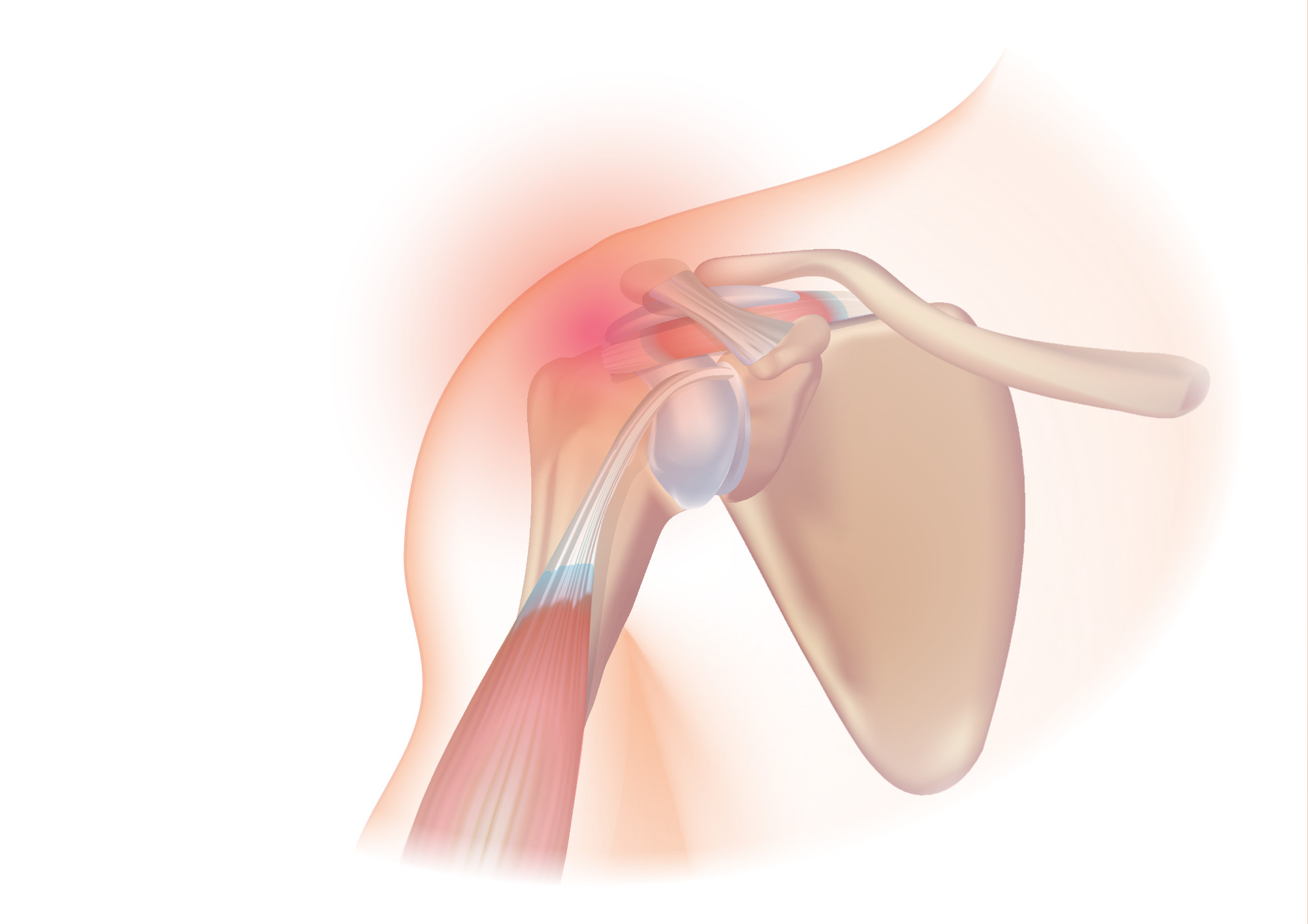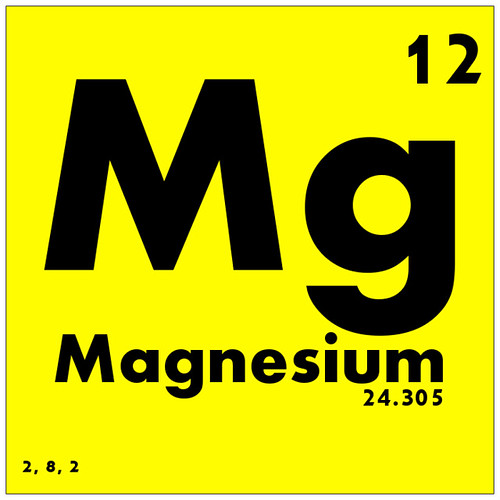
Staying fit requires a considerable long-term commitment, a journey that can be deeply fulfilling but also fraught with potential setbacks. Nothing can derail progress faster than an injury, which, unfortunately, is an inherent part of nearly everyone’s fitness path, whether you are a regular exerciser or a professional athlete. Research indicates that a significant 41% of people experience physical problems while pursuing fitness, highlighting just how common these challenges are across the UK and beyond.
While the good news is that many injuries can be avoided with the right approach—focusing on proper warm-ups, mastering form, knowing your limits, and prioritizing recovery—there are times when pain persists. It’s critical to understand that not all injuries resolve with basic self-care. For those struggling with persistent pain or injuries that simply won’t heal on their own, seeking professional help from neuromuscular specialists or physical therapists is not just an option, but an essential step.
Indeed, addressing the root cause of neuromuscular dysfunction can significantly improve mobility and reduce the risk of re-injury, allowing individuals to safely return to their fitness routine and continue their progress. This guide delves into some of the most common workout-related injuries, exploring their nature, how they occur, and, crucially, when these issues demand a closer look from a medical expert to ensure proper healing and prevent long-term complications.

1. **Strains and Sprains**Strains and sprains represent some of the most common soft-tissue injuries encountered during physical activity. They are frequently caused by overextension, where a muscle or joint is pushed beyond its normal range of motion, or by inadequate warm-ups, which leave muscles and ligaments unprepared for intense exertion. Understanding the distinction between the two is vital: strains affect muscles and tendons, which connect muscles to bones, while sprains impact ligaments, the tough bands of fibrous tissue that connect bones to other bones and stabilize joints.
These injuries commonly occur in areas subject to dynamic movement, such as the ankles, knees, and wrists. For instance, an unexpected twist during a run could lead to an ankle sprain, or an overzealous lift might result in a muscle strain in the back. The pain from these injuries can range from mild discomfort to sharp, debilitating agony, immediately disrupting your workout routine and daily life.
While post-workout muscle soreness is a normal physiological response to exercise, it is crucial to distinguish this from sharp, persistent pain, which signals a more serious issue. Ignoring these initial warning signs can be costly. A minor tweak or strain, if left unaddressed, has the potential to escalate into a chronic condition, sidelining you for extended periods and creating a frustrating cycle of pain, rest, and regression rather than celebrating personal bests.
For the initial management of most acute injuries like strains and sprains, particularly within the first 48 hours, the R.I.C.E. (Rest, Ice, Compression, and Elevation) method is highly recommended. This approach helps to prioritize your well-being by reducing pain and inflammation, and can potentially speed up healing for slight injuries. However, it is imperative to listen to your body and recognize its limitations.
If the pain from a strain or sprain persists after a week, or if it is sudden and intense, seeking professional medical advice is the best course of action. A healthcare provider can offer an accurate diagnosis and recommend the appropriate course of treatment, which might include physiotherapy or more in-depth intervention. This ensures that you address the root cause effectively and prevent minor issues from escalating into major, long-term problems that refuse to heal without expert guidance.
Read more about: Unlock Your Morning: Physical Therapists Reveal 12 Simple Stretches to Conquer Lower Back Pain for Good

2. **Tendonitis**Tendonitis is a prevalent overuse injury, often developing gradually among individuals who push themselves too hard without adequate rest. It is characterized by inflammation of a tendon, the thick fibrous cords that attach muscle to bone. When the same motion is repeated excessively, the muscles tire, which in turn places increased and undue strain on the tendons and bones. This repetitive stress, coupled with a lack of muscle strength, is a common recipe for tendon injury.
The condition can manifest in various parts of the body, making everyday movements painful and challenging. Common sites for tendonitis include the shoulders, where it might present as rotator cuff tendonitis; the elbows, known as tennis or golfer’s elbow; and the knees, where it can be described as patellofemoral syndrome. Other areas prone to tendonitis include shin pain (posterior tibialis tendonitis), hip pain (gluteus medius tendonitis), and heel pain (Achilles tendonitis).
Unlike sudden, acute injuries, tendonitis tends to creep up over weeks or months, as a result of cumulative microtrauma to the tendon. This makes it an “under-recovery” injury, emphasizing the critical importance of allowing ample time for rest and repair between bouts of activity. When the body isn’t given this crucial recovery period, the repetitive stress compounds, leading to the inflammation and damage characteristic of tendonitis.
Recognizing the early signs of tendonitis is crucial for effective management. Symptoms to watch for include discomfort or stiffness after activity, pain that occurs during the activity itself, or lingering pain once the activity has ceased. As the condition progresses, the pain may become constant, impeding your ability to perform even basic activities, let alone exercise. These are clear signals that the body’s repair mechanisms are struggling to keep up with the demands placed upon them.
When these signs appear, it is essential to seek expert guidance. Ignoring persistent pain associated with tendonitis can lead to chronic pain and prolonged recovery periods, potentially resulting in tendon tears or other severe complications. A sports medicine specialist can provide a personalized plan to optimize performance and recovery by addressing the underlying biomechanical issues and guiding you through a structured rehabilitation program designed to heal the tendon and prevent recurrence.
Read more about: Swing Strong, Play Long: 14 Simple Ways to Prevent Common Tennis and Golf Elbow Injuries

3. **Shin Splints**Shin splints, medically known as medial tibial stress syndrome, are a common and often debilitating issue, particularly among runners and those involved in high-impact exercises. This condition involves an inflammation of the muscles and tendons that surround the tibia, or shin bone. The pain typically manifests along the inner edge of the shinbone, and can be quite intense, easily deterring even the most dedicated athletes from continuing their routines.
The primary cause of shin splints is usually repetitive stress on the lower leg, often from activities that involve repeated impact, such as running, jumping, or brisk walking, especially if there’s a sudden increase in the intensity, duration, or frequency of exercise. Inadequate footwear, improper running form, or exercising on hard or uneven surfaces can also contribute significantly to their development, exacerbating the stress placed on the shin muscles and tendons.
While preventable with the right approach, shin splints can be notoriously persistent if not properly managed. The constant pounding and strain on the lower legs without adequate rest and recovery can lead to chronic inflammation and pain, making it difficult to maintain consistency in your fitness journey. Many individuals attempt to push through the pain, adhering to a ‘no pain, no gain’ mindset, which can unfortunately backfire horribly and prolong the healing process.
Prevention strategies are paramount for avoiding shin splints. These include a gradual progression of activity, adhering to principles like the 10% rule, which suggests increasing your workout by no more than 10% each week. Furthermore, wearing supportive footwear, being mindful of your footing on varied surfaces, and strengthening your calf and ankle muscles through exercises like calf raises can help improve stability and reduce the strain on the shins. Proper warm-ups that prepare the lower leg muscles for exertion are also critical.
However, if the pain from shin splints persists despite these preventive measures and self-care, professional help is warranted. Lingering pain that impedes activity or constant discomfort after activity suggests that the underlying issue requires more targeted intervention. A physical therapist can evaluate gait, identify muscle imbalances, and design a tailored program of exercises and stretches to alleviate pain, restore function, and ensure a safe return to high-impact activities without the risk of recurrence.
Read more about: Beyond the Pace: Your Definitive Guide to Running Mechanics, Injury Prevention, and Holistic Well-being

4. **Lower Back Injuries**Lower back injuries are unfortunately widespread among individuals engaging in physical activity, ranging from mild strains to more serious conditions such as herniated discs. These injuries are often attributable to a combination of factors, including weak core muscles, which provide essential support to the spine, and improper lifting techniques. Lifting heavy weights without maintaining proper form or engaging the core muscles effectively places undue stress on the delicate structures of the lower back.
One common error is failing to keep the back straight when lifting weights, leading to significant pressure on the spine. The context explicitly warns that “you could hurt your spine if you don’t keep your back straight when lifting weights.” This highlights the critical importance of technique over the sheer volume of weight lifted, especially for beginners in strength training, who should prioritize accurate movements.
The consequences of lower back injuries extend beyond immediate pain, impacting both physical progress and mental drive. Few things are as disheartening as needing to pause your workout routine due to a persistent ache, knowing you are missing out on hard-earned progress. Ignored or improperly addressed, a minor lower back strain can evolve into a chronic condition, trapping you in a cycle of pain, rest, and regression that erodes motivation and confidence.
To prevent lower back injuries, strengthening your core muscles is a fundamental strategy. Exercises like planks and bridges are highly effective in building the foundational strength needed to support your spine and improve overall stability. When lifting any heavy object, always make a conscious effort to engage your core and lift with your legs, allowing the powerful muscles of your lower body to do the work, rather than putting strain directly on your back.
Should lower back pain persist or be severe, seeking professional help is paramount. A healthcare provider or physical therapist can diagnose the specific issue, which might be complex, and develop an individualized treatment plan. As experts suggest, addressing the root cause of neuromuscular dysfunction can significantly improve mobility and reduce the risk of re-injury, facilitating a safe return to your fitness routine and preventing chronic pain that truly refuses to heal without specialized intervention.
Read more about: Swing Strong, Play Long: 14 Simple Ways to Prevent Common Tennis and Golf Elbow Injuries

5. **Stress Fractures**Stress fractures represent an insidious type of overuse injury, developing gradually from repetitive stress on bones without sufficient time for repair. Unlike acute fractures caused by a single traumatic event, stress fractures are tiny cracks in the bone, often resulting from excessive motion or overloading dysfunction, particularly when muscles tire and place increased strain directly on the skeletal structure. They highlight the body’s struggle when it is pushed too hard, too often, without adequate recovery.
These fractures are especially common in weight-bearing bones that endure high impact during activities. The context specifically notes their prevalence in the foot, particularly the metatarsals; the shin, referring to the tibia; and the thigh, impacting the femur. Runners, dancers, and individuals involved in sports requiring repetitive jumping or impact are particularly susceptible to stress fractures, as their bones are constantly subjected to microtrauma that, without recovery, accumulates into structural damage.
The underlying mechanism often involves a combination of repetitive motion and a lack of supporting muscle strength. When muscles fatigue, they lose their ability to adequately absorb shock, transferring that stress directly to the bones. This makes rest and targeted strength training crucial components of prevention. Furthermore, inadequate equipment, such as worn-out shoes that no longer provide sufficient cushioning or support, can also increase the risk by failing to dissipate impact forces effectively.
Recognizing the signs of a stress fracture is crucial, as they develop subtly over weeks or months. Initial symptoms might include discomfort or stiffness after activity, progressing to pain during activity, and eventually, lingering or constant pain that impedes normal movement. Ignoring these signs, which many do in an attempt to “push through” discomfort, can lead to more severe fractures, chronic pain, and significantly prolonged recovery periods, making a return to fitness exceptionally difficult.
Given the subtle onset and the serious nature of bone injury, seeking professional help is absolutely essential if a stress fracture is suspected or if bone-related pain persists. A sports medicine specialist can provide an accurate diagnosis, often requiring imaging, and guide a carefully structured recovery plan. This plan typically involves complete rest from the offending activity, followed by a gradual progression of activity and cross-training, ensuring the bone has ample time to heal properly and preventing future re-injury, which is vital for long-term health and athletic performance.
Read more about: The 13 Critical Welding Defects That Can Turn Your Weight Bench Into a Money Pit: A Guide to Avoid Structural Failure

6. **Runner’s Knee**Pain around the kneecap, commonly known as Runner’s Knee or patellofemoral syndrome, is a prevalent issue that can significantly impede activity for athletes and casual exercisers alike. This condition typically arises from a combination of factors, including overuse, where the knee joint is subjected to repetitive stress without adequate recovery. It can also stem from underlying biomechanical issues such as misalignment of the kneecap or weakness in the surrounding muscles, particularly the quadriceps, hamstrings, and glutes.
The discomfort associated with Runner’s Knee often intensifies with activities like running, jumping, or even going up and down stairs. Ignoring these initial warning signs can transform a manageable ache into chronic pain, forcing a prolonged break from beloved fitness routines. The pain signals that the body’s protective mechanisms are struggling, and continuing to push through it can lead to further irritation and inflammation around the kneecap, making recovery more challenging.
Proper technique is a cornerstone of prevention, especially in exercises like squats and lunges. The context explicitly highlights that “Improper squatting technique, where the knees cave inwards, can also contribute to knee injuries.” Focusing on strengthening your quads, hamstrings, and glutes, while paying close attention to knee alignment, can build robust support for the knee joint. Gradual progression of activity, adhering to principles like the 10% rule, also prevents overloading the knee before it’s ready.
If pain persists despite these preventive measures and self-care, seeking professional help is crucial. A physical therapist can accurately assess gait, identify muscle imbalances, and design an individualized program of exercises and stretches. This expert guidance ensures proper healing, helps correct any contributing factors, and facilitates a safe return to high-impact activities, preventing chronic issues and supporting long-term knee health.
Read more about: Beyond the Pace: Your Definitive Guide to Running Mechanics, Injury Prevention, and Holistic Well-being

7. **Rotator Cuff Issues**The shoulder joint, with its extensive range of motion, is inherently vulnerable to injury, and issues with the rotator cuff are among the most common. The rotator cuff is a critical group of four muscles and their tendons that surround the shoulder joint, providing stability and enabling a wide array of arm movements. Injuries here can range from tendonitis, an inflammation of these tendons, to more severe tears, significantly impacting an individual’s ability to lift, reach, or even sleep comfortably.
These injuries frequently arise from overuse, where repetitive overhead motions—common in sports like swimming, tennis, or weightlifting—place excessive strain on the shoulder. Poor lifting mechanics are also a significant contributor; as the context points out, “Shoulder injuries can occur due to overuse, poor lifting mechanics, or sudden forceful movements.” Attempting to lift heavy weights overhead without proper guidance or technique can compromise the integrity of the rotator cuff.
Symptoms often include a dull ache deep in the shoulder, particularly exacerbated by overhead activities, along with weakness or limited range of motion. Ignoring these symptoms can lead to chronic pain and a worsening of the injury, potentially requiring more intensive interventions. It is vital to distinguish between muscle soreness and persistent, sharp pain that signals a deeper structural issue within the shoulder.
Preventing rotator cuff injuries involves a commitment to proper form and strategic warm-ups. “Warm up your shoulders properly before workouts, and avoid lifting heavy weights overhead without proper guidance to prevent shoulder injury,” the context advises. Strengthening the muscles around the shoulder, back, and core can also provide better overall stability. Should pain persist or significantly limit movement, a healthcare provider or sports medicine specialist can diagnose the exact issue and guide a tailored rehabilitation program, which may include physical therapy to restore strength and function.
Read more about: Beyond the Glamour: Unpacking the Systemic Realities and Dangerous Toll of Long Shooting Hours on Hollywood Sets

8. **Ankle Sprains**Ankle sprains are one of the most common acute injuries in physical activity, occurring when the ankle is twisted or rolled beyond its normal range of motion, stretching or tearing the ligaments that connect the bones of the lower leg to the foot. These injuries are particularly prevalent during high-impact activities, such as running, jumping, or sports requiring quick changes in direction, and can be exacerbated by unstable landings or uneven surfaces.
The immediate aftermath of an ankle sprain often involves sudden pain, swelling, and difficulty bearing weight on the affected foot. The severity can range from a mild stretch (Grade 1) to a complete tear of the ligaments (Grade 3), each requiring different levels of management. While the R.I.C.E. (Rest, Ice, Compression, and Elevation) method is highly recommended for initial management, particularly within the first 48 hours, it’s crucial to understand that not all sprains will resolve with self-care alone.
Preventative measures are essential for safeguarding your ankles. Wearing supportive footwear specifically designed for your activity, such as running shoes for runners, can significantly reduce the risk. The context notes, “By wearing the right shoes, you can prevent discomfort and potential injuries. For instance, running in running shoes or lifting weights in supportive shoes can help you avoid sprained ankles or knee problems.” Additionally, being mindful of your footing on varied surfaces and incorporating exercises like calf raises to strengthen ankle muscles can greatly improve stability and resilience.
If ankle pain persists beyond a week, or if you experience severe swelling, bruising, or an inability to put weight on the ankle, professional medical evaluation is paramount. A physical therapist can accurately diagnose the extent of the injury and develop a comprehensive rehabilitation plan, which may include specific “ankle sprain rehabilitation exercises.” This structured approach is vital not only for healing the current injury but also for restoring full range of motion, strength, and proprioception to prevent recurrent sprains, which are a common and frustrating consequence of inadequate rehabilitation.
Read more about: Unlock Your Morning: Physical Therapists Reveal 12 Simple Stretches to Conquer Lower Back Pain for Good

9. **Tennis Elbow**Often mistaken as an ailment exclusive to racket sports enthusiasts, Tennis Elbow, medically known as lateral epicondylitis, is a common overuse injury affecting the tendons on the outside of the elbow. This condition results in persistent elbow pain and tenderness, often radiating into the forearm and wrist, and can significantly impair grip strength and the ability to perform everyday tasks or engage in workouts.
The primary cause of Tennis Elbow is repetitive strain from motions that involve the wrist and arm, especially those requiring gripping, twisting, or extending the wrist. While tennis is a classic example, activities like painting, carpentry, extensive typing, or weightlifting with improper form can all contribute. The repetitive stress leads to microscopic tears and inflammation in the tendons that attach the forearm muscles to the outside of the elbow bone, particularly when muscles tire and place increased strain on these connective tissues.
Individuals often report pain when lifting objects, shaking hands, or even just turning a doorknob, making it a frustrating and debilitating condition. Ignoring the initial discomfort, a common pitfall driven by a “no pain, no gain” mentality, can escalate the inflammation and damage, leading to chronic pain and prolonged recovery periods. The body signals distress through pain, and it’s essential to heed these warnings rather than push through them.
Prevention involves a multi-faceted approach, starting with mastering proper technique in any activity that stresses the forearm and wrist. Strengthening the forearm and wrist muscles through targeted exercises, ensuring equipment is appropriate (e.g., racket grip size, weightlifting form), and gradually increasing intensity are all crucial. If symptoms arise, resting the affected arm and applying ice can help, but if the pain persists or worsens, professional help is warranted. A physical therapist can provide specific stretches, strengthening exercises, and techniques to alleviate pain, improve function, and guide a safe return to activity, preventing this “under-recovery” injury from becoming a chronic setback.
Read more about: Swing Strong, Play Long: 14 Simple Ways to Prevent Common Tennis and Golf Elbow Injuries

10. **Overuse Injuries: The Silent Saboteurs**While we’ve explored specific manifestations like tendonitis, stress fractures, and tennis elbow, it’s critical to understand the overarching category of overuse injuries, which are truly the “silent saboteurs” of consistent fitness progress. These aren’t the dramatic, acute injuries from a sudden fall or collision, but rather insidious conditions that “develop gradually from repetitive stress on muscles, tendons, bones, or joints without adequate recovery time,” as defined by experts. They are, in essence, “under-recovery” injuries, highlighting a fundamental imbalance between activity and rest.
The genesis of overuse injuries lies in a combination of factors: “excessive motion (‘overloading dysfunction’), poor movement patterns, inadequate equipment, or simply not enough rest.” When the body is pushed too hard, too often, without sufficient opportunity for repair, its finely tuned systems begin to break down. Muscles fatigue, losing their ability to absorb shock, which then transfers stress directly to tendons and bones, creating the cumulative microtrauma that characterizes these conditions. This is why issues like tendon inflammation or tiny bone cracks emerge over weeks or months, rather than in an instant.
Preventing these pervasive injuries demands a holistic and proactive approach. Mastering proper technique in all exercises is paramount; “learn the correct movements before increasing intensity” to ensure stress is distributed appropriately. Strengthening supporting muscles builds resilience, while using quality equipment—like supportive footwear—ensures external factors don’t exacerbate stress. Crucially, prioritizing recovery through ample rest, proper nutrition, and hydration allows the body to rebuild stronger. Experts emphasize “a gradual progression of activity and cross-train with multiple other types of exercise, and strength-train to support normal mechanics” to avoid overloading any single system.
Recognizing the subtle signs of overuse is your first line of defense. Pay attention to “discomfort or stiffness after activity,” “pain during activity,” “lingering pain after activity,” or especially “constant pain that impedes activity.” Ignoring these signals, hoping they will simply disappear, often leads to chronic pain and significantly prolonged recovery. A sports medicine specialist can provide an accurate diagnosis, often requiring detailed assessment of biomechanics, and craft a personalized plan to optimize performance and recovery. This expert guidance is invaluable in addressing the root cause, healing the injury, and empowering you to maintain an active, injury-free life.
**Conclusion: Cultivating a Resilient Fitness Journey**
Navigating the landscape of physical fitness is a profoundly rewarding endeavor, yet it requires vigilance and an informed approach to prevent setbacks. As we’ve explored, workout injuries, from the acute strains and sprains to the insidious development of overuse conditions like runner’s knee or tennis elbow, are an unfortunate but often preventable part of nearly everyone’s journey. The key to uninterrupted progress isn’t just about pushing limits; it’s fundamentally about understanding your body’s signals, respecting its need for recovery, and proactively implementing strategies that safeguard your health.
The consistent message echoing through our discussion is clear: while self-care methods like R.I.C.E. can provide initial relief, persistent pain or severe symptoms demand professional attention. Neuromuscular specialists and physical therapists play an indispensable role in diagnosing complex issues, addressing root causes of dysfunction, and guiding tailored rehabilitation programs. Their expertise is what truly allows individuals to “safely return to your fitness routine” and prevent minor issues from escalating into chronic problems that refuse to heal on their own.
Ultimately, fostering a sustainable and injury-free workout environment means embracing a culture of smart training. This includes meticulous warm-ups, unwavering commitment to proper form, strategic rest and recovery, and the judicious use of appropriate equipment. By integrating these practices into your routine and seeking expert guidance when needed, you not only protect your body but also cultivate a more resilient mindset, ensuring that your fitness journey is not a series of stops and starts, but a continuous path of strength, health, and achievement. Your body is an incredible machine; treat it with the informed care it deserves, and it will reward you with a lifetime of active potential.



